Australia Climate
Australia's climate is governed largely by its size and by the hot, sinking air of the subtropical high pressure belt. This moves north and south with Antarctica. But it is variable, with frequent droughts lasting several seasons—thought to be caused in part by the El Niño-Southern Oscillation.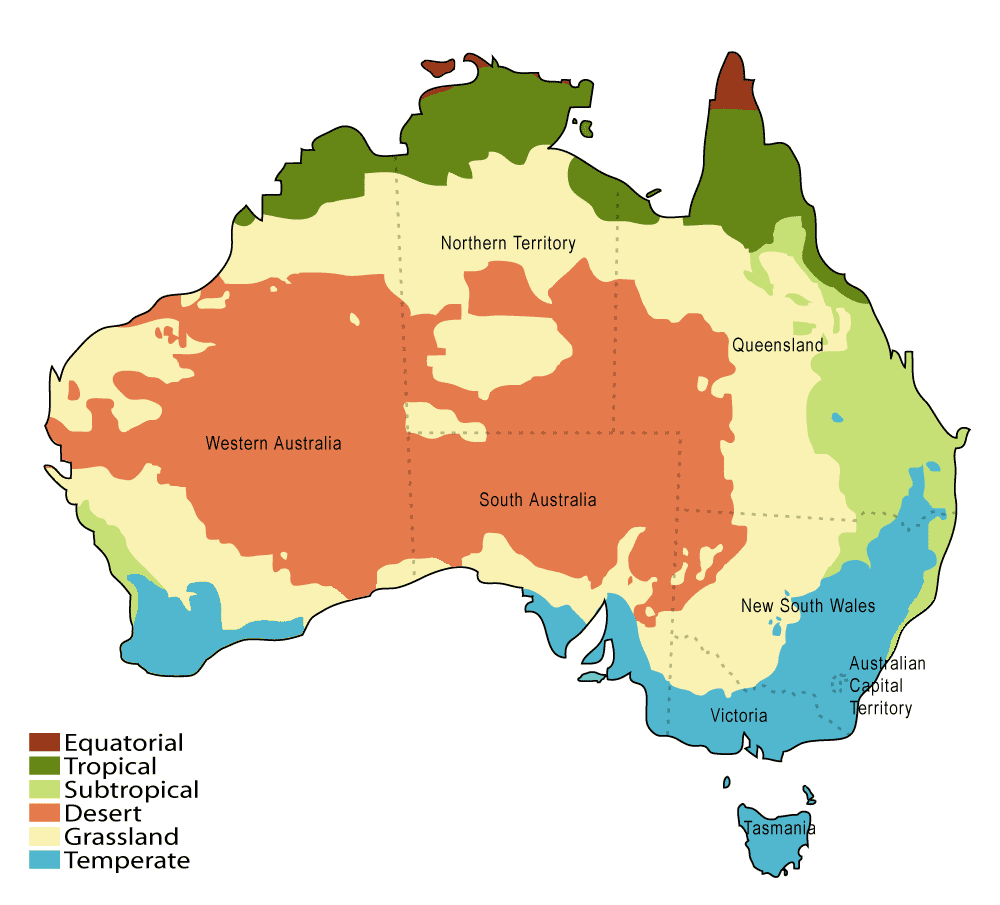
For Australia Climate Map, Direction, Location and Where Addresse
The climate varies widely due to its large geographical size, but by far the largest part of Australia is desert or semi-arid. Only the south-east and south-west corners have a temperate climate and moderately fertile soil. The northern part of the country has a tropical climate, varied between tropical rainforests, grasslands and part desert.Things you should know Australia climate before you move to Australia.
- The Australian climate is not just hot – it offers a climate to suit everyone across its eight states and territories
- Situated in the southern hemisphere, Australia's seasons are at opposite times to the northern hemisphere
- Australia's tropical region also has a 'wet' and a 'dry' season
- Australia's north is hotter, where its tropics and outback are located
- Australia's south is typically cooler, with the southern most state, Tasmania, receiving an icy breeze from Antarctica
- The Australian climate is not just hot – it offers a climate to suit everyone across its eight states and territories
- Situated in the southern hemisphere, Australia's seasons are at opposite times to the northern hemisphere
- Australia's tropical region also has a 'wet' and a 'dry' season
- Australia's north is hotter, where its tropics and outback are located
- Australia's south is typically cooler, with the southern most state, Tasmania, receiving an icy breeze from Antarctica
Köppen climate types of Australia
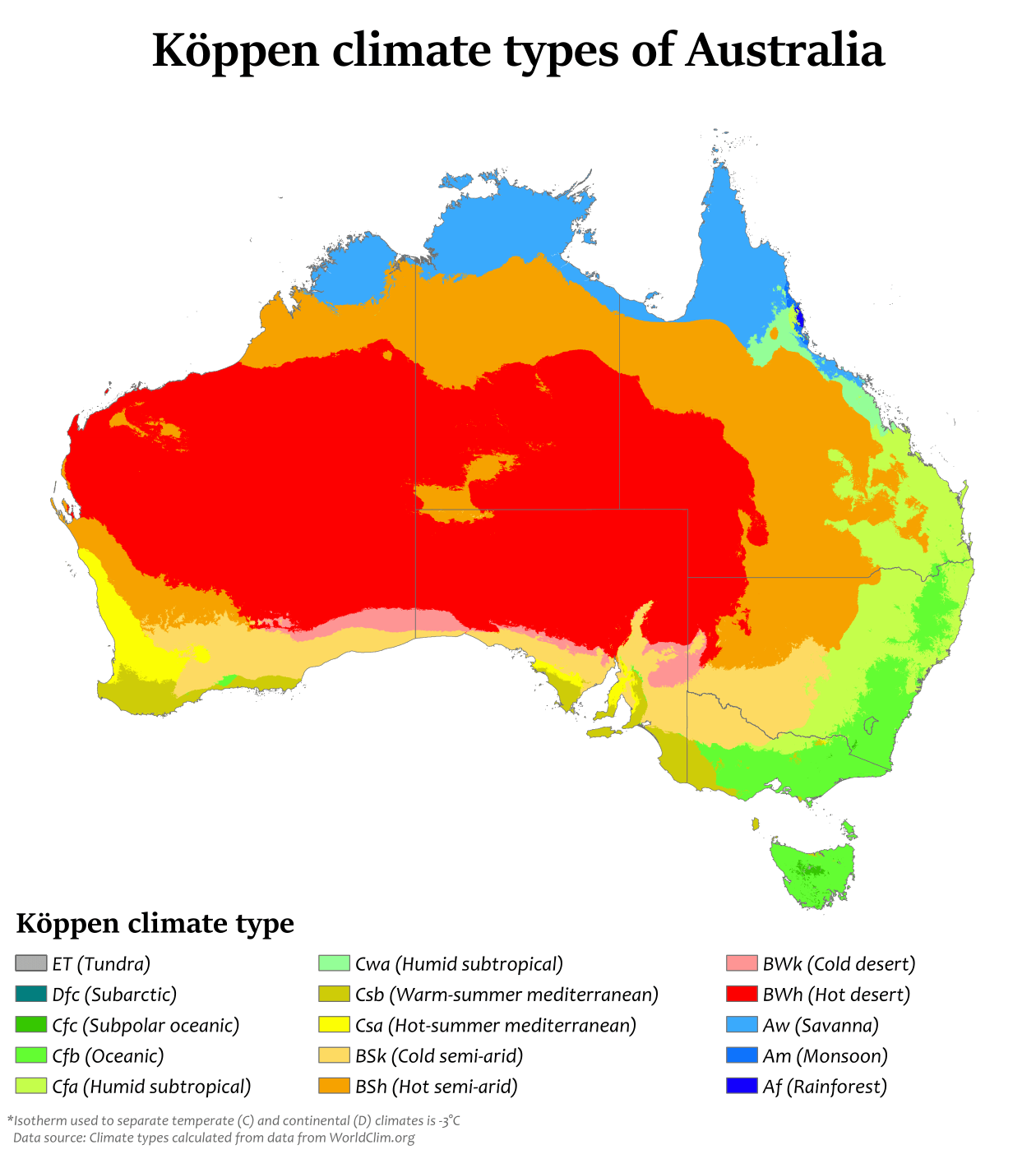
Köppen climate types of Australia
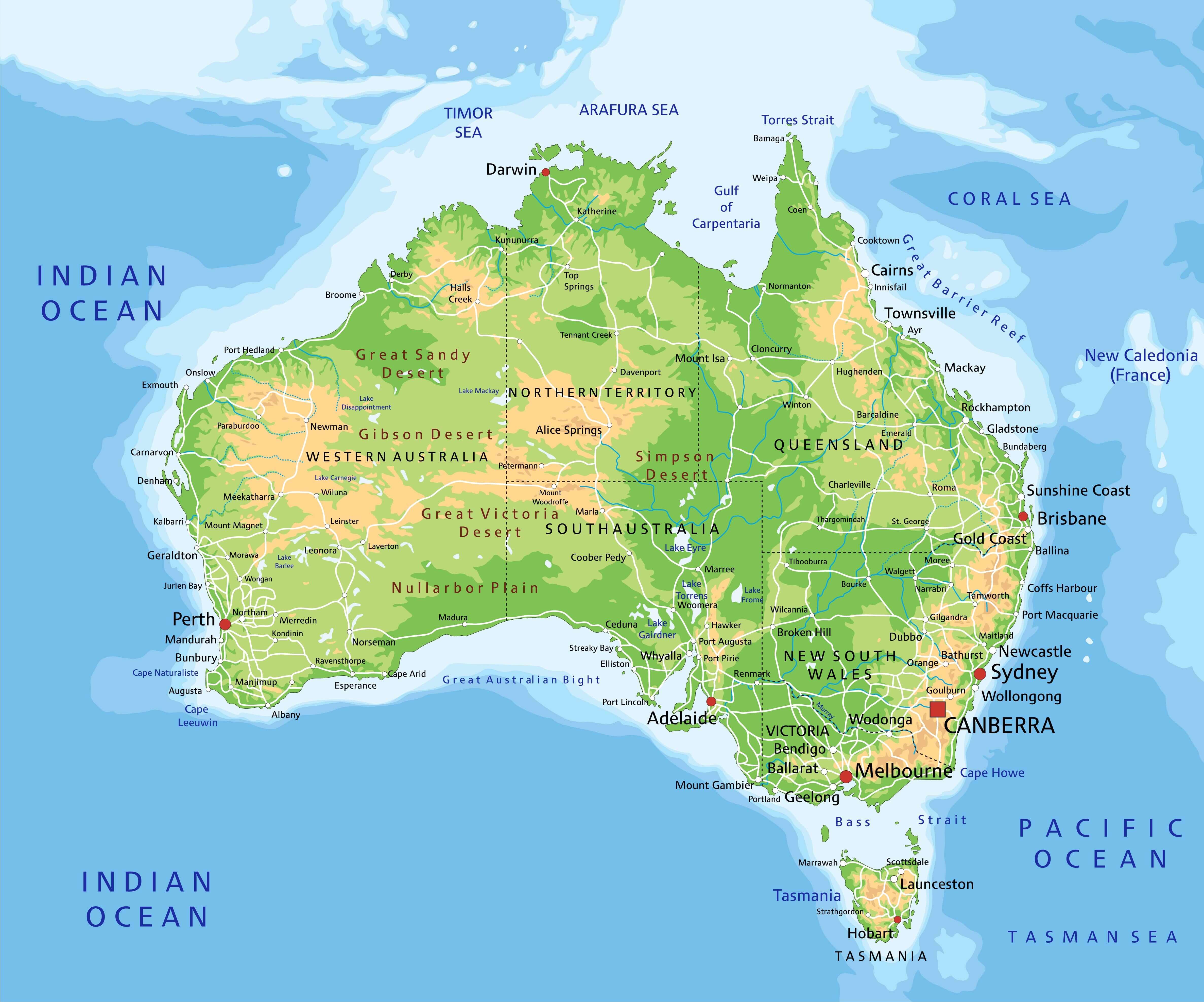
If you prefer hotter weather, then you will most likely prefer Australia's north region. Northern Australia encompasses desert and tropical regions across three states and territories – Western Australia, the Northern Territory and Queensland. Meanwhile, for those that prefer milder weather, Australia's southern states are for you. Including Victoria, Tasmania and South Australia, the south typically offers a steady, cooler climate.
Climate in New South Wales
 Just like Australia itself, the temperature across New South Wales varies considerably with very high temperatures in NSW's northwest and very cold temperatures in its southern alpine regions. The rest of the state enjoys a temperate climate.
Just like Australia itself, the temperature across New South Wales varies considerably with very high temperatures in NSW's northwest and very cold temperatures in its southern alpine regions. The rest of the state enjoys a temperate climate. 
Climate in Northern Territory
 With an average winter low of 20C in its capital city, Darwin, the mercury regularly hits 40C in desert regions, like Alice Springs.
With an average winter low of 20C in its capital city, Darwin, the mercury regularly hits 40C in desert regions, like Alice Springs. 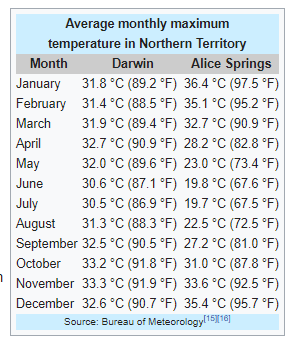
Climate in Queensland
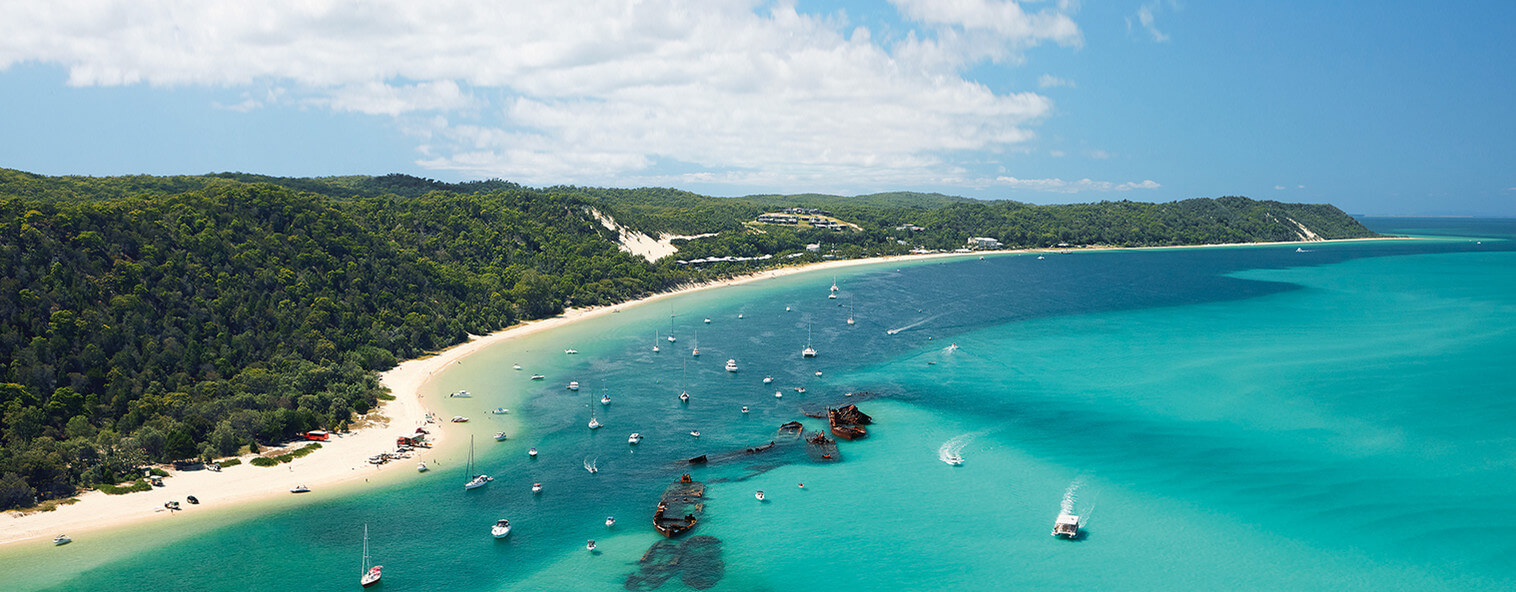 In Far North Queensland, Cairns averages a high of 31C and a low of 24C in summer, and a high of 26C and a low of 18C in winter. Further south in the state's capital, Brisbane, the average summer temperature tops 29C and 'cools' down to 21C, while the winter high averages at a balmy 21C and a low of 10C.
In Far North Queensland, Cairns averages a high of 31C and a low of 24C in summer, and a high of 26C and a low of 18C in winter. Further south in the state's capital, Brisbane, the average summer temperature tops 29C and 'cools' down to 21C, while the winter high averages at a balmy 21C and a low of 10C. 
Climate in South Australia
 Those along the coast enjoy Mediterranean conditions, with temperate winters and warm, dry summers. Further north, in the South Australian outback, towns like Coober Pedy experience days that reach 40C. Adelaide, the capital, reaches an average summer high and low of 28C and 17C, while winter cools down to 16C and 8C.
Those along the coast enjoy Mediterranean conditions, with temperate winters and warm, dry summers. Further north, in the South Australian outback, towns like Coober Pedy experience days that reach 40C. Adelaide, the capital, reaches an average summer high and low of 28C and 17C, while winter cools down to 16C and 8C. 
Climate in Tasmania
 The state's capital, Hobart, enjoys a comfortable summer high and low of 21C and 12C, while winter is mild with a high of 12C and a cooling low of 5C. The west coast of Tasmania experiences the most rainfall and there's snowfall in the mountains at wintertime.
The state's capital, Hobart, enjoys a comfortable summer high and low of 21C and 12C, while winter is mild with a high of 12C and a cooling low of 5C. The west coast of Tasmania experiences the most rainfall and there's snowfall in the mountains at wintertime. 
Climate in Victoria
 An average Melbourne summer tops 25C and cools to 14C, while winter is considerably chillier with an average top of 14C and a low of 7C. Further north in the state, the weather is drier and warmer as it reaches the border of New South Wales.
An average Melbourne summer tops 25C and cools to 14C, while winter is considerably chillier with an average top of 14C and a low of 7C. Further north in the state, the weather is drier and warmer as it reaches the border of New South Wales. 
Climate in Western Australia
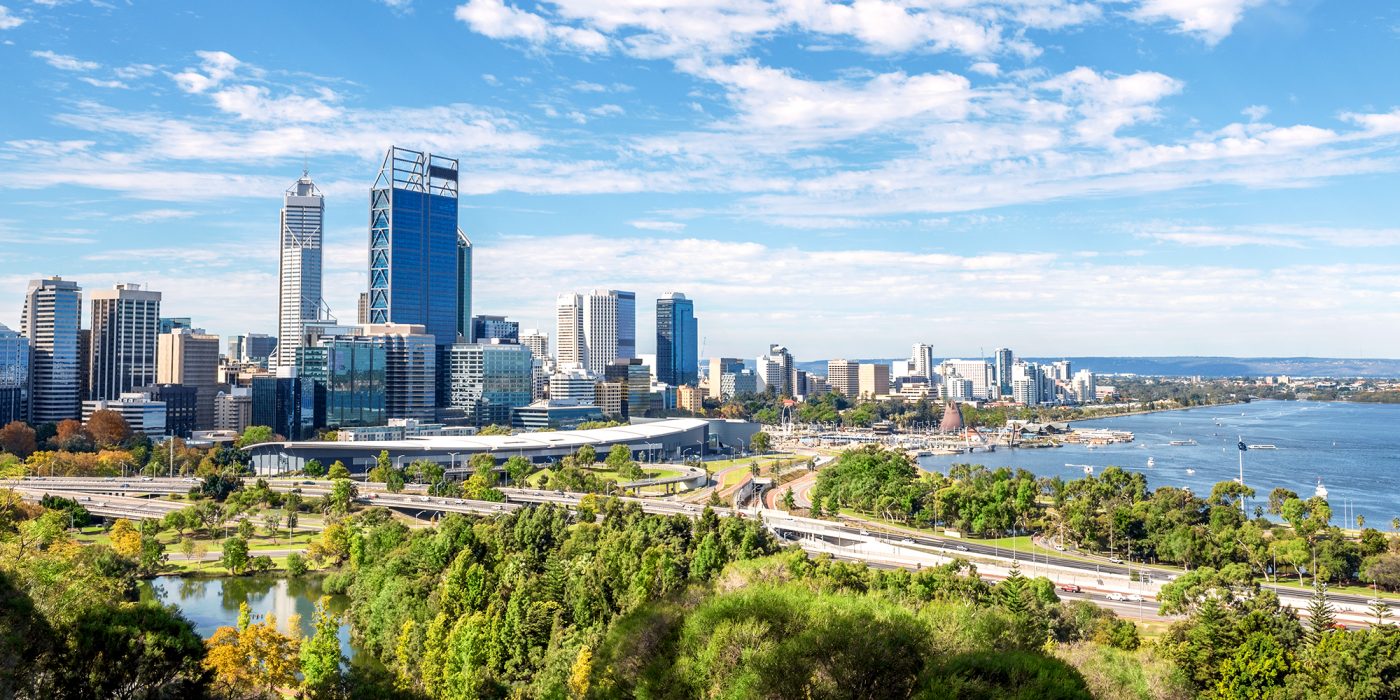 The south of the state offers temperatures reminiscent of the Mediterranean, with the state's capital averaging a balmy high of 29C in summer and a low of 17C, while winters are generally mild but wet.
The south of the state offers temperatures reminiscent of the Mediterranean, with the state's capital averaging a balmy high of 29C in summer and a low of 17C, while winters are generally mild but wet. Up north, in Western Australia's outback it's not uncommon for the mercury to hit 40C by day and plummet to zero by night. Brilliant electrical storms are also common in the top end.
Up north, in Western Australia's outback it's not uncommon for the mercury to hit 40C by day and plummet to zero by night. Brilliant electrical storms are also common in the top end. What is Australia like in the winter?
Australia, for the most part, is a pretty warm place, even during the coldest times only bottoming out in Sydney at about 10 degrees Celsius (50 degrees Fahrenheit). It’s even warmer in northern areas, where it mostly just gets less humid and rains less. … In fact, Australia’s winter weather is better for some things.What is the climate in Sydney Australia?
Sydney enjoys a sunny climate with mild winters and warm summers, perfect for making the most of the outdoors. Plan ahead with this information on temperature and rainfall. During summer, average temperatures range from 18.6 – 25.8°C (65.5 – 78.4°F), and average humidity spikes to 65%.What are the seasons like in Australia?
The seasons in the temperate zone are described in terms of European seasons applied to the southern hemisphere in the following sequence:
- Summer: December to February.
- Autumn: March to May.
- Winter: June to August.
- Spring: September to November.
Click for Australia Climate Direction »
Click for Australia Climate Street View »
Copyright Turkey Travel Guide - 2005 - 2025. All rights reserved. Privacy Policy | Disclaimer
